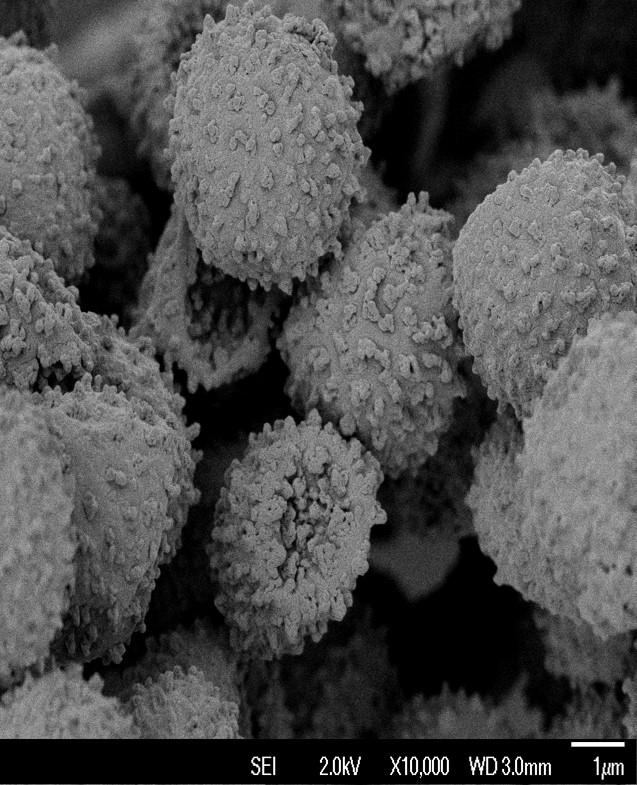Aromatic compounds including phenols and aromatic amines constitute one of the major classes of pollutants that are of concern in many countries [1]. Some of the industrial area that discharge phenol include oil refineries, coke and coal conversion plants, plastics and petrochemical companies, dyes, textiles and paper industries. Almost all phenols are toxic. Furthermore, phenol and many of its derivatives are considered to be hazardous pollutants. Due to its toxicity and hazard, the concentration of phenol which is greater than 50 ppb is harmful to some aquatic species and the ingestion of 1 g phenol may be fatal to humans [2]. As a consequence, this may affect the ecosystem of water sources where phenols are discharged. Thus, the removal of phenol in water is important.
Conventional methods in the removal of phenol and aromatic compounds from industrial waste are solvent extraction, microbial degradation, adsorption on activated carbon and chemical oxidation [3-4]. Although these methods are effective and useful to remove phenol in water, they suffer from serious drawbacks such as high cost, incompleteness of purification, formation of hazardous by-products and applicability to only a limited phenol concentration range [5]. Enzymatic treatment has been proposed by many researchers as a convenient method for removing phenol [6-8]. Enzymes are highly selective and can effectively treat phenol even in dilute wastes [1]. Moreover, enzymes operate over a broad aromatic concentration range and require low retention times with respect to other treatment methods [9].
Tyrosinase was demonstrated to remove phenols and aromatic amines from phenolic industrial effluents [1-2, 8-9]. Atlow and his group [9] reported a successful application of soluble tyrosinase in the “cleansing” of pollutants. In the presence of proton, the oxidation process generates phenoxy radicals which diffuse from the active centre into solution to react with phenol and form substances that are much less water soluble which can be known as quinones. These quinones are reactive and slowly undergo non-enzymatic conversion, oligomerization reactions, which ultimately yield high molecular weight; insoluble polyphenolics [9-10] and consequently inactivated the tyrosinase for further reaction. Since inactivation of tyrosinase was considered to be associated with the quinone attachment on the amino acid residue in proximity to the active site of enzyme [10], Sun and his teams [10] suggested the use of chitosan to adsorb quinones which have been generated during phenol degradation. Thus, these insoluble polymers can be precipitated out of the solution and separated by simple filtration or flocculation [9].
Several techniques based on immobilized tyrosinase have been developed for the treatment of phenolic industrial wastewaters. The best and suitable support has the ability to stabilize the enzyme activity and increase its half-life. Moreover, the method of the attachment of enzyme should not disturb the enzyme active centre. The cost of immobilization needs to be low and only small amounts of enzyme need to be used [11]. If these requirements are met, an effective immobilized tyrosinase for phenol degradation may be achieved [10]. Previous efforts to immobilize tyrosinase for the removal of phenol include adsorption techniques using inorganic adsorbents which are alumina and cation resin. 7000 units of tyrosinase were immobilized on 500 mg of resin. However, only 0.02 g/L of phenol conversion was detected. A similar problem is encountered with alumina. In addition, the weakness of the binding forces involved in adsorption might permit the enzyme to desorb from the support [12].

Silica matrix, besides being inexpensive, has been considered as a potential support material in enzyme immobilization for removal of phenol because of its chemical inertness, high mechanical strength, optical transparency, hydrophilicity, biocompatibility, biodegradability and anti-bacterial properties [13-14]. It can also be prepared under ambient conditions and exhibit tuneable porosity, high thermal stability and negligible swelling in both aqueous and non-aqueous solutions [15]. The numerous literatures on such stabilization described mostly success rather than failure. For instance, Seetharam and his teams [16] suggested the use of immobilized tyrosinase for phenol degradation. Tyrosinase immobilized on calcium aluminosilicate (CaA) and sodium aluminosilicate (NaA) was able to remove between 15% and 60% of the phenol in solution, depending upon the initial phenol concentration, the enzyme loading, pH, and duration of reaction. It could be reused repeatedly without any decrease in performance. In addition, it is advantageous to use a porous support such as aerogel so that the enzyme can be spread on a large surface area [15, 17].
- Girelli, A. M., Mattei, E. and Messina, A. Phenols Removal by Immobilized Tyrosinase Reactor in On-Line High Performance Liquid Chromatography. Chim. Acta. 2006. 580: 271-277.
- Aitken, M. D. (1993). Waste Treatment Applications of Enzymes: Opportunities and Obstacles. Chem Eng. J. 52, B49-B58.
- Adak, A., Pal, A. and Bandyopadhyay, M. Removal of Phenol from Water Environment by Surfactant-Modified Alumina through Adsolubilization. Colloids Surf., A. 2006. 277: 63-68.
- González, P. S., Capozucca, C. E., Tigier, H. A., Milrad, S. R. and Agostini, E. Phytoremediation of Phenol from Wastewater by Peroxidases of Tomato Hairy Root Cultures. Enzyme Microb. Technol. 39: 647-653.
- González, P. S., Capozucca, C. E., Tigier, H. A., Milrad, S. R. and Agostini, E. Phytoremediation of Phenol from Wastewater by Peroxidases of Tomato Hairy Root Cultures. Enzyme Microb. Technol. 39: 647-653.
- Britto, J. M., Rabelo, D. and Rangel, M. Catalytic Wet Peroxide Oxidation of Phenol from Industrial Wastewater on Activated Carbon. Today. 2008. 133-135: 582-587.
- Sathishkumar, M., Vijayaraghavan, K., Binupriya, A. R., Stephan, A. M., Choi, J. G. and Yun, S. E. Porogen Effect on Characteristics of Banana Pith Carbon and the Sorption of Dichlorophenols. Colloid Interface Sci. 2008. 320: 22-29.
- Karam, J. and Nicell, J. A. Potential Application of Enzymes in Waste Treatment. Chem. Tech. Biotechnol. 1997. 69: 141-153.
- Atlow, S. C., Bonadonna-Aparo, L. and Klibanov, A. M. (1984). Dephenolization of industrial wastewaters catalyzed by Polyphenol oxidase. Bioeng. 26: 599-603.
- Sun, W. Q., Payne, G. F., Moas, M. S. G. L. and Wallance, K. K. Tyrosinase Reaction/Chitosan Adsorption for Removing Phenols from Wastewater. Biotechnol. Progr. 1992. 8: 179-186.
- Ensuncho, L., Alvarez-Cuenca, M. and Legge, R. L. Removal of Aqueous Phenol Using Immobilized Enzymes In a Bench Scale and Pilot Scale Three-Phase Fluidized Bed Reactor. Bioprocess. Biosyst. Eng. 2005. 27: 185-191.
- Wada, S., Ichikawa, H. and Tatsumi, K. Removal of Phenols from Wastewater by Soluble and Immobilized Tyrosinase. Biotechnol. Bioeng. 1993. 42: 854-858.
- Carlson, G., Lewis, D., McKinley, K., Richardson, J. and Tillotson, T. Aerogel Commercialization: Technology, Markets and Costs. Non-Cryst. Solids. 1995. 186: 372-379.
- Chen, Q., Kenausis, G. L. and Heller, A. Stability of Oxidases Immobilized In Silica Gel. J. Am. Chem. Soc. 1998. 120: 4582-4585.
- Gill, and Ballesteros, A. Bio-Encapsulation within Synthetic Polymers (Part 1): Sol-Gel Encapsulation Biologicals. Trends Biotechnol. 2000. 18(7): 282-296.
- Seetharam, G. B. and Saville, B. A. Degradation of Phenol Using Tyrosinase Immobilized on Siliceous Supports. Water Res. 37(2): 436-440.
- Desai, P. D., Dave, A. M., and Devi, S. Entrapment of Lipase into K-Carrageenan Beads and its Use in Hydrolysis of Olive Oil in Biphasic System. J. Mol. Catal. B: Enzym. 2004. 31(4-6): 143-150.
Source: Nor Suriani Sani (2009). Synthesis and Characterization of Alcohol-Free Tyrosinase Encapsulated Silica Aerogel. MSc (Chemistry), Master Thesis, Universiti Teknologi Malaysia.

